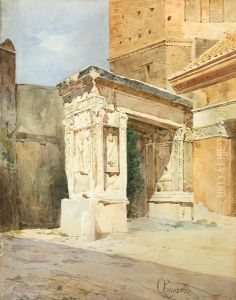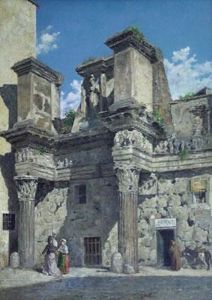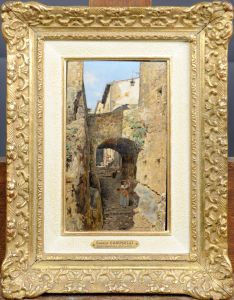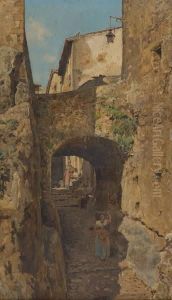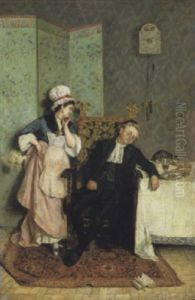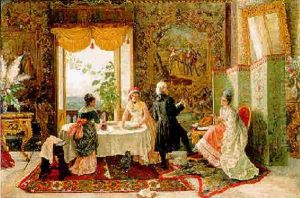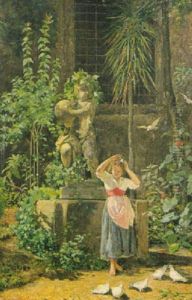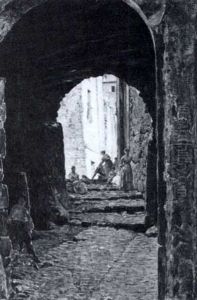Cesare Caroselli Paintings
Cesare Caroselli was an Italian painter, primarily known for his portraits and historical scenes. Born in 1885 in Rome, Italy, he lived during a period of significant artistic development in Europe, where the echoes of Romanticism were giving way to Modernist movements. Caroselli's work, however, remained largely influenced by the academic and classical traditions that had dominated Italian art for centuries.
Caroselli’s educational background is not widely documented, but it is known that he received traditional artistic training, which was typical for the era. His artwork often showcased his technical skill and attention to detail, with a particular focus on the human figure, reflecting the academic emphasis on anatomy and form.
Although Caroselli's career was relatively short due to his untimely death in 1922 at the age of 37, he managed to establish himself within the Italian art scene. His portraits were particularly appreciated for their realism and psychological insight, and he painted various Italian nobles and members of the bourgeoisie. Caroselli was also known to have produced a number of historical and allegorical paintings, which were popular genres at the time.
Caroselli's work did not have a significant impact on the avant-garde movements of the early 20th century, as his style remained rooted in the past. Nevertheless, his paintings are valued for their craftsmanship and as examples of the prevailing tastes and artistic preferences of his time.
The details of Caroselli's life are not extensively documented, and as such, he is not as well-known as many of his contemporaries. Despite this, his works are part of several Italian art collections and occasionally appear in art auctions, where they are appreciated by collectors who have an interest in the traditional styles of the late 19th and early 20th centuries.
Cesare Caroselli's contribution to art history may not be revolutionary, but his work provides insight into the Italian portrait tradition and the historical context in which he painted. His premature death may have cut short a promising career, and one can only speculate on the development his art might have taken had he lived longer.

